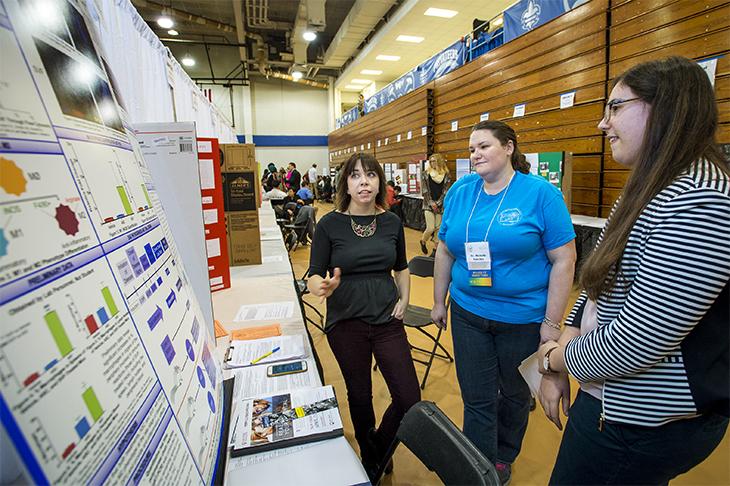Science fair rocks: ‘We saw some amazing work’
Michelle Sanchez and her team of volunteer judges covered just about every inch of the massive Human Performance Center at the University of New Orleans during the area’s annual science fair for young students.
The UNO venue is home to the Greater New Orleans Science and Engineering Fair, but it is Sanchez, a professor of practice and director of K-12 STEM Outreach at Tulane University, and Annette Oertling, a retired Tulane professor, who run the show.
Along with dozens of volunteer judges, they made their way up and down the aisles of the center on Feb. 23–25, studying hundreds of projects and interviewing contestants — middle and high school students from Orleans, Jefferson, St. Bernard and Plaquemines parishes — about their work.
“The Tulane School of Science and Engineering is committed to inspiring local middle and high school students to continue to pursue STEM careers.”
Michelle Sanchez
The three days of the fair are grueling, but Sanchez can’t imagine not being involved.
“The Tulane School of Science and Engineering is committed to inspiring local middle and high school students to continue to pursue STEM careers,” she said. “And our involvement in the GNOSEF allows our faculty and students to engage the next generation of scientists and engineers.”
This year, Tulane provided 38 judges — three undergraduates, 20 graduate and medical students, nine faculty members and other Tulane staff. UNO provided additional judges and helped secure the venue at a discounted rate.
They judged 300 projects representing 20 schools in such categories as cellular and molecular biology, animal sciences, electrical engineering and environmental management.
“We’re looking for research using the scientific method for science projects and using the design process for engineering projects,” Sanchez said. “We also want to see how well the students can communicate about their research and making sure they’re the ones who did the work.”
Mason Varuso, a student at Patrick Taylor Science & Technology Academy, came in first place with an environmental engineering project titled: “How does the thermal conductivity of liquids affect heat absorption in photovoltaic troughs?”
Choosing a winner is never easy, Sanchez said. “We saw some amazing work.”

